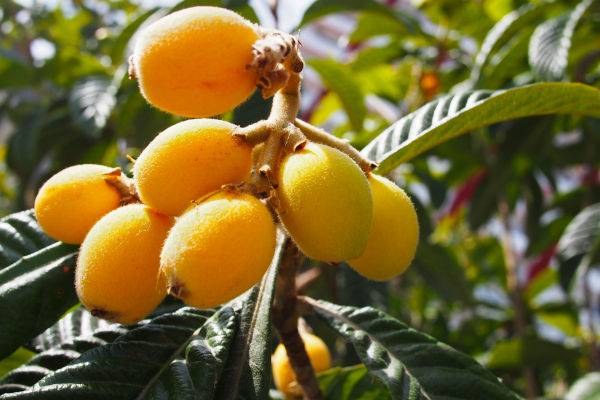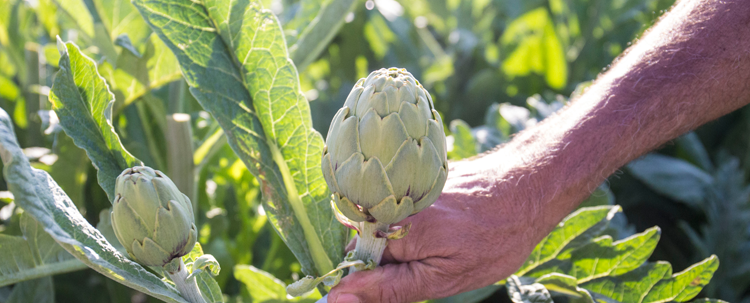Medlar, a fruit with Designation of Origin
The medlar is one of the most eaten fruits in Spring. Its pleasant flavour, with a touch of tart, makes it the perfect snack to freshen up these first days of heat.
fresh food
Share
The medlar is an orange-yellow ovoid fruit, covered by a thin but consistent skin that is easily detached. Its pulp is sweet and tartat the same time and its big and characteristic brown seeds take up approximately half of its diameter. It comes from a tree with the same name that is cultivated mainly in the East and in the South-east of Spain.
It originated in the East, in China, India and Japan, where the medlar has been used for more than a thousand years as an ornamental tree. It was not until the 1800’s that it began to be cultivated for the commercialisation of its fruits. From that date, through the Jesuits and merchant seamen, the medlar travelled to France and Italy, later arriving inSpain, Sagunto specifically, and into the hands of Captain Roig. From there, it extended to the whole Mediterranean bas in and the South-east of the Iberian Peninsula.
In Spain, the most important production areas are the provinces of Alicante, Granada and Malaga. In the rest of the world, besides the main producers China and Japan, there are significant crops in Brazil, the United States and Mediterranean countries such as Italy.
Nutritional properties
The qualities of the medlar make it a very desirable fruit to improve and prevent certain ailments or pathologies. Its nutritional properties and its mineral and vitamin content contribute to the improvement of:
1. Intestinal conditions: if you suffer from gastroenteritis, colitis or some other stomach ailment, medlar contributes to the regulation of intestinal activity, because of its astringent and toning effect on the mucous membranes of the stomach. It is also recommended for delicate stomachs.
2. Kidney problems: 75% of medlar is water, so if you have gout, uric acidor kidney stones, its intake is highly recommended. Its diuretic effect helps eliminate toxins more quickly.

3. Weight loss: its high potassium content and low levels of sodium and calories, make the medlar a great ally to lose weight. In addition, its water and fibre content also contributes to weight loss diets.
4. Cholesterol and cardiovascular problems: the pectin it contains exerts aprotective action on our body, helping to normalise cholesterol levels.
5. Diabetes: the medlar contains an organic compound called terpenoid that,according to several studies, contributes to a possible anti-diabetic action, reducing blood glucose levels.
6. Liver diseases: the medlar's properties are recommended in patients withhepatic diseases.
Calories | 44 mg |
| 28% | ||
Water | 74,5% | Magnesium | 11% | ||
Proteins | 5% | Iron | 0,5 % | ||
Fats | 8% | Copper | 0,2 % | ||
Carbohydrates | 10,6% | Sulphur | 11 % | ||
Fibre | 10,0 5 | Cloro | 3 % | ||
Sodium | 6 mg | Vitamina B2 | 0,05 % | ||
Calcium | 30% | Vitamina C | 2% |
D.O. Loquats from Callosa d'En Sarrià
There is a variety of Japanese loquat that has adapted perfectly to Alicante's Callosa d'En Sarrià territory, mainly because of its pleasant climate. The climatic conditions along with the know-how and the fertile lands of this area have contributed to the production of a high-quality loquat. All of this led Callosa d'En Sarrià to have its own Designation of Origin since 1992 .
Its production is the largest in the Spanish territory, accounting for 70% of the national market and 90% of the Valencian Community production.
Buying and conservation tips
The best way to enjoy this spring fruit and all its nutritional properties are to eat it fresh. Keep in mind that the medlar is easily marred, so it is best to choose a fruit with mature, firm flesh and good colour because it will be sweeter and will make you feel better.
On the other hand, we can find the medlar in so many different forms today: in syrup, in the form of nectar, honey, jam, liquor, spirits, etc. All are delicious so go ahead and try them!

Artichokes, ‘flowers’ of water, fibre and vitamins
Read more
Artichokes, ‘flowers’ of water, fibre and vitamins






